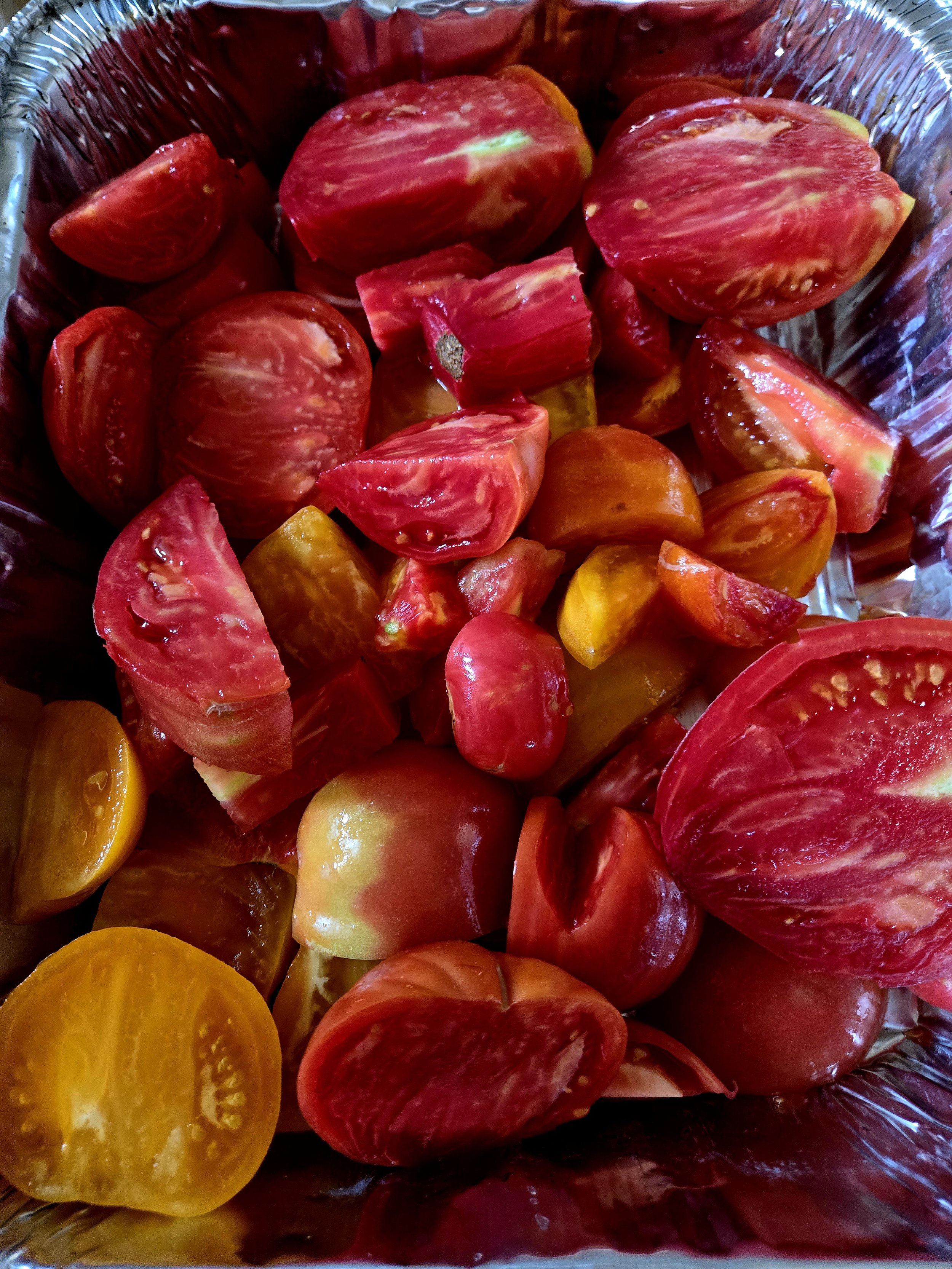The Tomato Origin Story
Tomatoes have a rich history that dates back to the ancient Mesoamerican civilizations in modern-day Mexico and Central America. These civilizations, including the Aztecs and Mayans, recognized the potential of tomatoes as early as 700 AD, cultivating them in the fertile lands of the region. There is some conflicting information regarding their origins, with some sources suggesting that tomatoes may also have originated from the Andean regions of South America, particularly in present-day Peru, Ecuador, and northern Chile. Regardless, the indigenous peoples in these areas valued tomatoes, known as “tomatl” in the Aztec language, for their rich flavor and nutritional benefits.
Aztecs consuming tomatoes
Archaeological evidence from sites like Tehuacán in Mexico shows that ancient cultivation of tomatoes dates back thousands of years. Mesoamerican farmers developed advanced agricultural techniques, including raised beds and irrigation channels, to optimize tomato cultivation. Beyond serving as a food source, tomatoes held symbolic and ritual significance in these cultures, often being included in religious ceremonies and offerings to deities.
In the 16th century, Spanish conquistadors brought the tomato to Europe, marking the beginning of its influence on European cuisine. Initially viewed with suspicion due to its association with the Solanaceae family, which includes toxic plants, the tomato was often relegated to ornamental use in gardens. However, its culinary potential soon became apparent.
The tomato made its first significant appearance in Italy during the mid-16th century, likely brought to the Kingdom of Naples under Spanish rule. The first golden-yellow varieties, known as “pomo d’oro” (golden apple), began to transform Italian cooking. By the 18th century, tomatoes had established themselves as a staple ingredient, celebrated for their versatility in a multitude of recipes.
Italian chefs embraced the tomato, turning it into a foundational element of their cuisine. Iconic dishes such as pizza margherita, pasta al pomodoro, and caprese salad prominently feature tomatoes, and they inspire a diverse range of sauces that are central to the Mediterranean diet. Unique varieties like San Marzano, Pachino, and datterino added to the richness of Italian culinary traditions.
Tomato cultivation thrives in southern Italy, particularly in regions like Campania, Puglia, Sicily, and Calabria, where the Mediterranean climate provides ideal growing conditions. For example, San Marzano tomatoes flourish on the slopes of Mount Vesuvius, benefiting from the mineral-rich volcanic soil that enhances their flavor.
Overall, the journey of the tomato from its origins in South America to becoming a beloved ingredient in Italian kitchens reflects the transformative power of culture and culinary traditions. In Italy, tomatoes symbolize creativity, passion, and a deep respect for the land, embodying the art of culinary innovation.
**References**
- Goldman, A. (2008). *The Heirloom Tomato: From Garden to Table: Recipes, Portraits, and History of the World’s Most Beautiful Fruit*. Bloomsbury USA.
- Robinson, J. (2014). *Eating on the Wild Side: The Missing Link to Optimum Health*. Little, Brown and Company.
- Hart, S. (2010). *Tomatoes: A Gardener’s Guide*. Timber Press.
- Smith, A. F. (1994). *The Tomato in America: Early History, Culture, and Cookery*. University of South Carolina Press.
- Ibsen, G., & Nielsen, J. (1999). *The Great Tomato Book*. Ten Speed Press. d Press.
-Ross, J. D. (2018). The Tomato Handbook: For Modern Organic Farming. Routledge.




